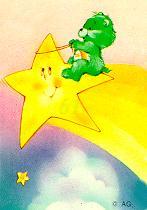Mahabodhi stupa - this is the view as you first walk in the gates
One of the smaller stupas surrounding the large one
Many people, monks and nuns come to the stupa to do pujas and practices. These monks and nuns were here for the Kagyu Monlam festival. The head of the Kagyu lineage of Tibetan Buddhism is His Holiness the Karmpa. He was at the stupa some days whilst we were there and I managed to see him close up whilst doing an inner kora (circumnavigation of the stupa). He is like the equivalent of His Holiness the Dali Lama, for the Kagyu tradition (HHDL is Gelug).
When the retreat finished we boarded our bus and headed to Patna. On the way we visited Rajgir and Nalanda monastery. Vulture's Peak, Rajgir, is where the historical Buddha Shakyamuni gave many teachings that were later written down and are known as sutras. Nalanda monastery is where some of the great Buddhist scholars studied. Nalanda was a huge monastery, 10km wide and when the Afghanis destroyed Nalanda, the library burned for 6 months! Below are a few pictures of the remaining ruins that have been excavated.
Venerable Chodron and Venerable Dondrub enter Nalanda
Ruins of the great Nalanda monastery
Next we travelled to Vaishali, the site in which Shakyamuni Buddha announced he was intending to pass into Nirvana (manifest dying). At this site a monastery and large stupa were built, as was a pillar, erected by King Ashoka. King Ashoka was a Buddhist king that ruled for many years and erected many pillars that marked holy places.
Kolhua Buddha Stupa, Vaishali
We boarded the bus once more and headed to Kushinagar, the place where the Buddha manifested dying. Below are some pictures of the site where the cremation of Shakyamuni Buddha's body took place. A stupa was built at this site (first pic below). When we arrived, some children approached us with the familiar cry of 'choclet' 'bisket'. I was explaining to them that I had no chocolate (second pic below) but started talking to them and asking their names etc. One girl had something like a puffed rice ball in her hand and I asked what it was. She replied with a gesture of wanting to give it to me. I declined and headed off to join the group. Afterwards she ran up to me and insisted that I take a new rice ball. I couldn't say no. I was so touched, she had nothing and was offering something to me!
Stupa built to mark the site of cremation of Shakyamuni Buddha
I have no choclet..
The young girl on the right insisted that I take her food and shooed away the other children that were begging for money
Below are some pictures of the site where Shakyamuni Buddha manifested dying. The picture directly below has two buildings. The left one houses a relic (a small pearl like object that remains after the cremation of holy beings) of the Buddha and the right a huge statue of the Buddha in the 'lion pose'. This is the pose in which the Buddha manifested dying and is said to be conducive for a peaceful death and for sleep (see second pic below).
The left building houses a relic of the Buddha and the right a statue
A statue of the Buddha in 'lion pose'
The bus then took us over the boarder into Lumbini, Nepal. This is where Prince Siddhartha (who later became known as Shakyamuni Buddha) was born. There are many monasteries from just about every tradition of Buddhism within one big park at this site. One particular monestry we visited was the Sakya (Tibetan) tradition. Below are some pictures from within the gompa (meditation hall). This decorative gompa is typical for all traditions of Tibetan Buddhism.
A torma offering (made of butter and flour) with a giant Guru Shakyamuni Buddha statue in the back
These paintings completely cover the walls. This one is one of the 21 Taras
The throne in the front has a picture of the Lama of this gompa
Some monks feed rice to the squirels living in the bodhi tree at Lumbini
The light offerings we made at Lumbini

The group practicing together at Lumbini
Somewhere on the way back to Dehli we stopped to have lunch at a fancy but old hotel. It was part of the local Maharaja's grounds. We were invited to go and have a look at the Maharaja's house so we walked over and we saw the Maharaja and Maharani about to drive off. They could not stay but they invited us to stay for tea. So we had tea in the garden! Being Western automatically gives you a strange sense of status in India.....
Enjoying tea on the terrace
Peter and Susan relax after taking their tea and biscuits
The Maharaja and his wife are Hindu's. This is their own private temple


Rob, blending with the locals and growing a mo
























No comments:
Post a Comment